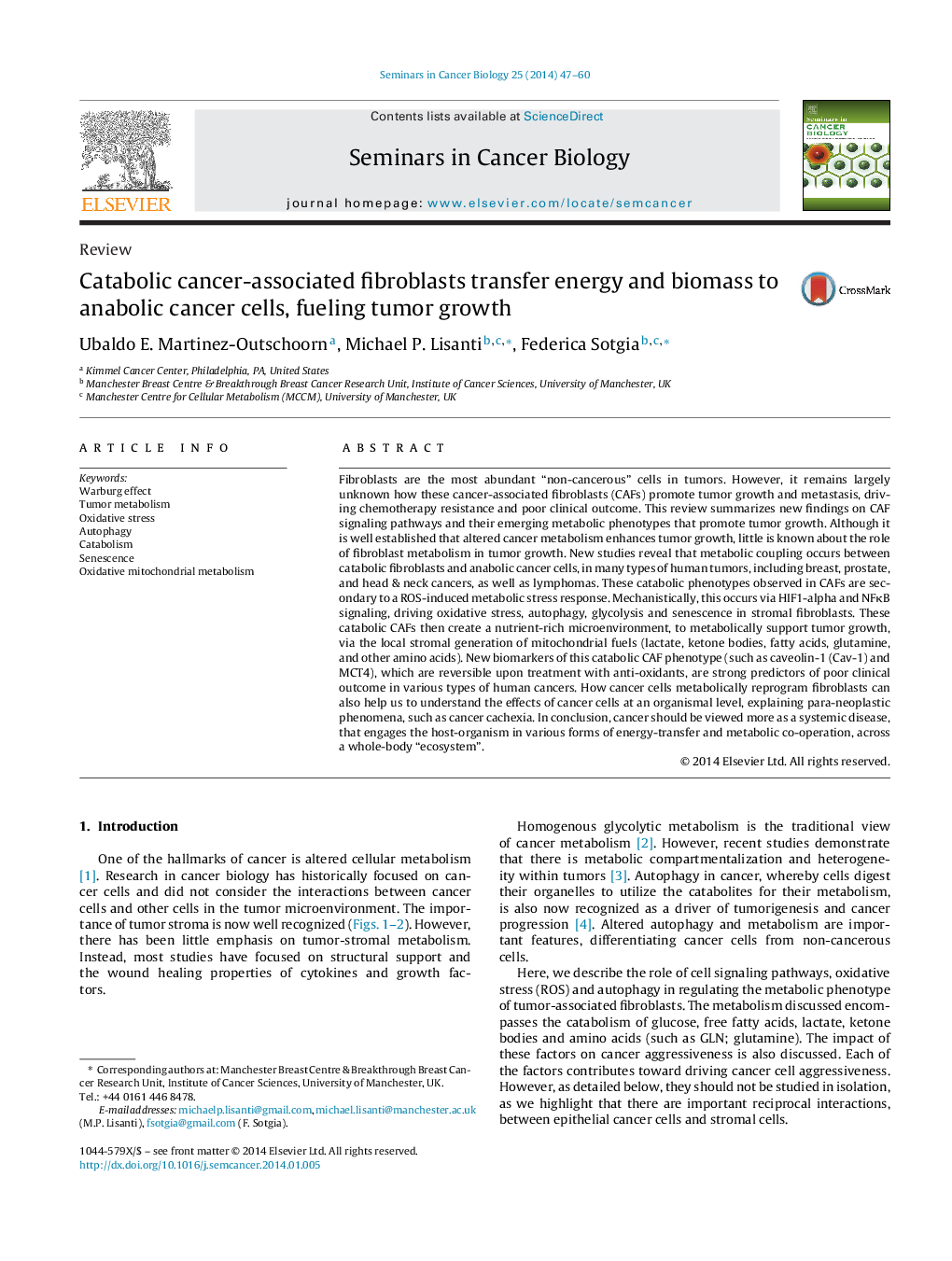| کد مقاله | کد نشریه | سال انتشار | مقاله انگلیسی | نسخه تمام متن |
|---|---|---|---|---|
| 2023654 | 1542542 | 2014 | 14 صفحه PDF | دانلود رایگان |
Fibroblasts are the most abundant “non-cancerous” cells in tumors. However, it remains largely unknown how these cancer-associated fibroblasts (CAFs) promote tumor growth and metastasis, driving chemotherapy resistance and poor clinical outcome. This review summarizes new findings on CAF signaling pathways and their emerging metabolic phenotypes that promote tumor growth. Although it is well established that altered cancer metabolism enhances tumor growth, little is known about the role of fibroblast metabolism in tumor growth. New studies reveal that metabolic coupling occurs between catabolic fibroblasts and anabolic cancer cells, in many types of human tumors, including breast, prostate, and head & neck cancers, as well as lymphomas. These catabolic phenotypes observed in CAFs are secondary to a ROS-induced metabolic stress response. Mechanistically, this occurs via HIF1-alpha and NFκB signaling, driving oxidative stress, autophagy, glycolysis and senescence in stromal fibroblasts. These catabolic CAFs then create a nutrient-rich microenvironment, to metabolically support tumor growth, via the local stromal generation of mitochondrial fuels (lactate, ketone bodies, fatty acids, glutamine, and other amino acids). New biomarkers of this catabolic CAF phenotype (such as caveolin-1 (Cav-1) and MCT4), which are reversible upon treatment with anti-oxidants, are strong predictors of poor clinical outcome in various types of human cancers. How cancer cells metabolically reprogram fibroblasts can also help us to understand the effects of cancer cells at an organismal level, explaining para-neoplastic phenomena, such as cancer cachexia. In conclusion, cancer should be viewed more as a systemic disease, that engages the host-organism in various forms of energy-transfer and metabolic co-operation, across a whole-body “ecosystem”.
Journal: Seminars in Cancer Biology - Volume 25, April 2014, Pages 47–60
